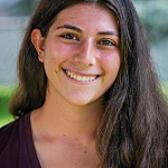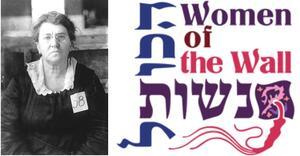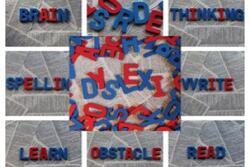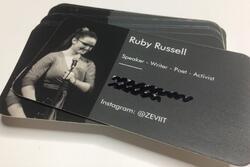Making Space Where There is None
This piece was written as part of the Rising Voices Fellowship, and was inspired by Power Couples, a JWA collection that showcases pairs of extraordinary Jewish women from many different disciplines, matching an early female trailblazer with a modern woman at the top of her game.
There are a million ways people are made to feel powerless. Whether it is age, economic class, race, sexual orientation, religion, or gender, inherent identity factors like these are constantly held against people, preventing them from reaching their full potential.
Anavah is the Jewish value of humility. But Anavah isn’t about being quiet or being loud—rather, it focuses on taking up the right amount of space for yourself. Being too proud means you might encroach on another person’s space. Being too humble means you might sacrifice some of your own.
To ask for the space you need is a daunting, terrifying task. But to take the space you need without permission? That’s even more challenging. Emma Goldman and Avigail Antman are two women who refused to settle for less, and who weren’t afraid to demand more.
Emma Goldman was born in 1869, in a small town in Lithuania. During her childhood, she showed a spark of the political activist she would become as an adult through her passion for reading, debating teachers, and exchanging ideas with radical students. However, even as young girl, Goldman’s world pushed her into the role of “girl,” refusing to let her be anything else. Her father once told her, “All a Jewish daughter needs to know is how to prepare gefilte fish, cut noodles fine, and give the man plenty of children.”
In 1885, fifteen-year-old Goldman escaped an arranged marriage and moved to the United States to live with her sister and her sister’s husband. Four years after moving, Goldman met Johann Most, an anarchist writer, and she quickly became his protégé. In the following years, Goldman spoke out about labor unions, birth control, and the anarchist movement.
As Goldman’s ideas evolved, she began to protest in more radical ways. In 1902, she was involved in a failed assassination attempt of the steel tycoon, Henry Clay Frick. Then, in 1903, she was arrested for inciting a riot. During her imprisonment, she studied to become a nurse, refusing to sit still and do nothing. Once she got out of prison, she co-wrote the book: Anarchy Defended by Anarchists. Goldman continued to push the limits of protest in America until she was exiled to the Soviet Union in 1919. This didn’t stop her, though—even in exile she continued to write and speak out for her ideals.
Some considered Goldman “the most dangerous woman in America.” Despite being a woman, and therefore not even having the right to vote, Goldman made more waves than most men did during her time. She refused to change herself for society. She didn’t bend; she didn’t break. Emma Goldman found her space in the world, and when it wasn’t enough, she took more.
As a child, Avigail Antman would go with her mother to the Western Wall every Shabbat. They would stand in the women’s section, silently praying, while the men’s side was alive with chanting and Torah readings. Antman was raised in the Old City of Jerusalem in an Orthodox family.
Today, Antman is a board member of Women of the Wall (WOW). WOW, founded in 1988, is a controversial group that brings Torahs to the women’s side of the wall. Naming themselves the “modern-day western wall liberators,” the members of WOW intend to break the literal mechitzah and figurative barrier put between women and Jewish religious practices. Every Shabbat, Antman and her comrades try to sneak a Torah through the security checks and conduct a Torah service. Often the women are harassed, and sometimes even detained, for breaking the rules.
Criticisms of Antman’s work with WOW mirrors the responses Goldman received for her radical ideas. Both women faced constant opposition to their beliefs. While not as radical as Goldman, Antman works to make a space for herself and her practices, despite what the rest of the world tells her.
Many people assume that Jewish Orthodoxy and feminism can’t coexist, but Antman’s religious practice is still true to her Orthodox upbringing, without neglecting her identity as a woman. She’s found her own way to practice Judaism that neither denies her beliefs nor her spiritual connection. Aside from WOW, Antman makes this duality work in her writing. She crafts weekly poems based on parshot from the Torah, giving her own type of midrash that fits her beliefs.
Like Goldman’s writing, Antman writes her truth. And while the Orthodox world she lives in seems unwilling to give her the space she needs, she takes her space anyway. Antman is a radical in her own right, fighting to live as she wants to in her society. Goldman once wrote, “I want freedom, the right to self-expression, everybody's right to beautiful, radiant things.” Both women have blazed this trail towards their own self-expression, fighting for those “beautiful, radiant things.”
This piece was written as part of JWA’s Rising Voices Fellowship.








Excellent!